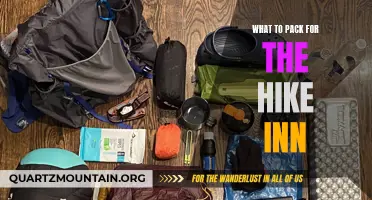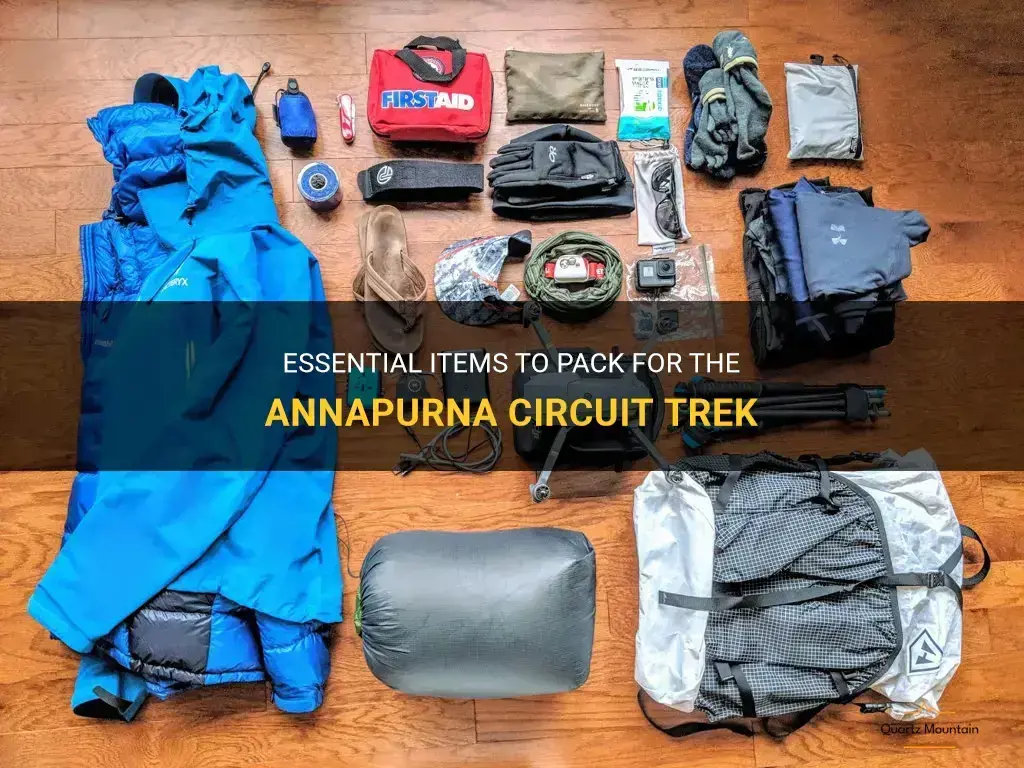
Embarking on the breathtaking Annapurna Circuit trek is an adventure of a lifetime, traversing through stunning landscapes, charming Nepalese villages, and challenging mountain passes. However, before conquering this epic journey, it is crucial to equip yourself with the essential items that will not only guarantee your safety and comfort but also enhance your overall experience. From sturdy hiking boots and warm clothing to reliable navigation tools and lightweight camping gear, this comprehensive guide will help you pack everything you need to make the most out of your Annapurna Circuit trek.
What You'll Learn
- What are the essential clothing items to pack for the Annapurna Circuit trek?
- Are there any specific gear or equipment recommendations for the Annapurna Circuit?
- What type of footwear is recommended for the Annapurna Circuit trek?
- Are there any specific items that are crucial for the high altitude conditions?
- Are there any specific medication or first aid supplies that should be included in the packing list?

What are the essential clothing items to pack for the Annapurna Circuit trek?
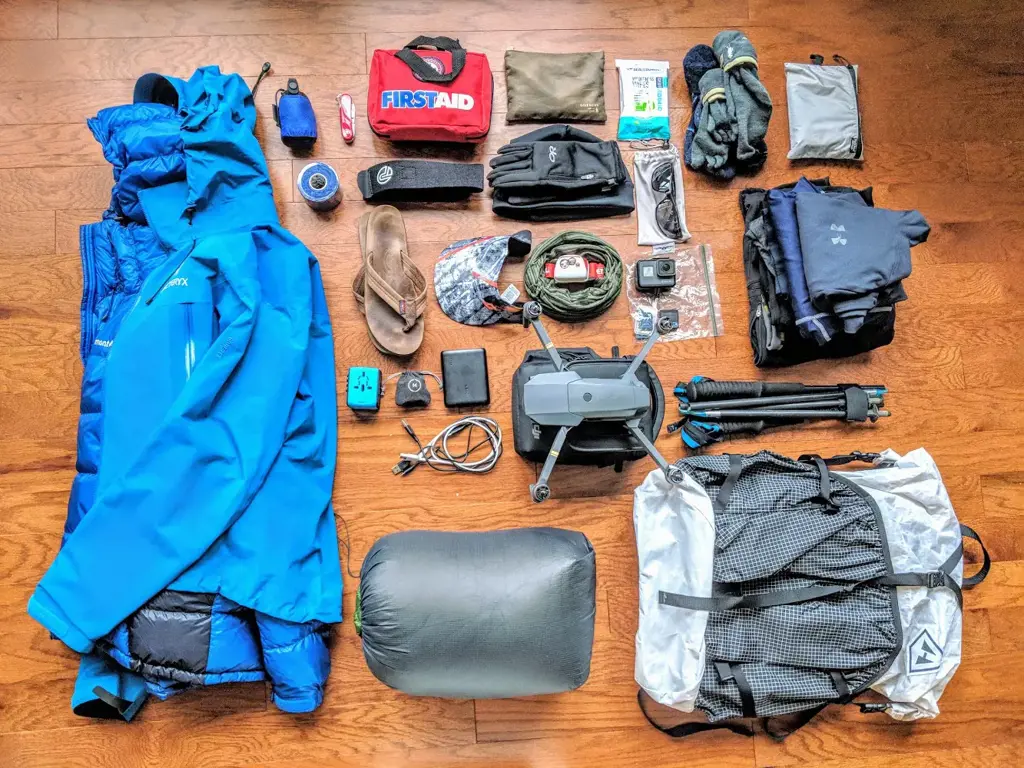
The Annapurna Circuit trek is a popular and challenging hike in the Himalayas of Nepal. It takes you through diverse landscapes, from lush forests to high mountain passes, and offers stunning views of the Annapurna mountain range. When planning for this trek, it is essential to pack the right clothing to ensure your comfort and safety throughout the journey. Here are some of the essential clothing items you should consider packing for the Annapurna Circuit trek:
- Base Layers: Base layers are the foundation of any trekking outfit. They help regulate your body temperature by wicking away sweat and keeping you dry. The ideal base layer should be made of moisture-wicking material, such as merino wool or synthetic fibers, and should fit snugly against your skin. Pack a few sets of base layers to ensure you have a fresh pair to wear each day.
- Insulating Layers: As you climb higher into the mountains, the temperature will drop significantly. Insulating layers, such as fleece jackets or down jackets, are crucial for providing extra warmth. These layers should be lightweight and breathable, making them easy to carry in your backpack when not in use.
- Waterproof Jacket: The Annapurna Circuit trek is known for its unpredictable weather, and you can expect some rainfall during your journey. A waterproof jacket is essential to keep you dry and protected from the elements. Look for a jacket that is both waterproof and breathable to ensure maximum comfort.
- Hiking Pants: Choose lightweight and quick-drying hiking pants that provide freedom of movement. Look for pants with zip-off legs, so you can easily convert them into shorts if the weather gets too hot. Additionally, consider packing a pair of thermal leggings for extra warmth during colder sections of the trek.
- Trekking Boots: Invest in a sturdy pair of trekking boots that provide ankle support and have a good grip. Make sure you break them in before the trek to avoid blisters and discomfort. It is also advisable to wear thick hiking socks to prevent blisters and keep your feet comfortable.
- Hat and Gloves: As you ascend to higher altitudes, the temperature drops significantly, and the wind becomes stronger. It is essential to pack a warm hat and gloves to protect yourself from the cold. Look for hats that cover your ears and gloves that are waterproof and insulated.
- Buff and Sunglasses: A buff, a versatile tube of fabric, is a must-have accessory for the Annapurna Circuit trek. It can be used as a headband, neck warmer, or face mask to protect you from dust, wind, and cold. Sunglasses are also crucial to protect your eyes from the harsh mountain sun and glare from the snow.
- Backpack: Choose a lightweight and waterproof backpack with enough capacity to carry all your essential items. Look for a backpack with a waist strap and adjustable shoulder straps for extra comfort and support.
Remember, it is essential to layer your clothing to regulate your body temperature. This allows you to add or remove layers as needed throughout the trek. Also, make sure to pack enough extra clothing in case of unexpected changes in weather or prolonged stays in tea houses.
In conclusion, packing the right clothing for the Annapurna Circuit trek is crucial for your comfort and safety. Be mindful of the varying temperatures and weather conditions you will encounter along the way. By packing the essential clothing items mentioned above, you will be well-prepared to tackle this challenging and rewarding trek.
Must-Have Items for Your Alaska Cruise in May
You may want to see also

Are there any specific gear or equipment recommendations for the Annapurna Circuit?
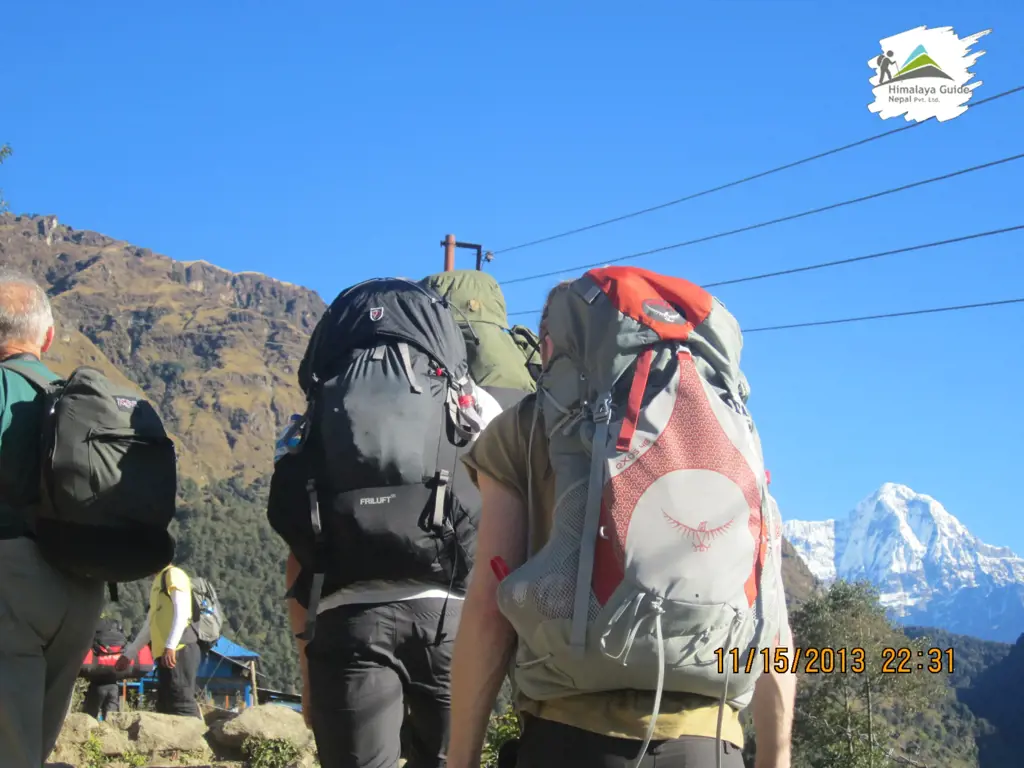
The Annapurna Circuit is considered one of the most popular treks in the world, attracting thousands of travelers each year. Located in the Annapurna region of Nepal, this trek offers stunning views of the Himalayan mountains, diverse landscapes, and unique cultural experiences. When planning a trek on the Annapurna Circuit, it is important to be well-prepared with the right gear and equipment to ensure a safe and enjoyable journey.
Here are some specific gear and equipment recommendations for the Annapurna Circuit:
- Trekking boots: A sturdy pair of trekking boots is essential for the rugged terrain of the Annapurna Circuit. Look for boots that provide ankle support and have a good grip on slippery surfaces. Make sure to break them in before the trek to avoid blisters and discomfort.
- Clothing: Layering is key when it comes to clothing for the Annapurna Circuit. The weather can change rapidly, so it is important to be prepared for varying temperatures and conditions. Pack lightweight and moisture-wicking clothing that can be easily layered. It is recommended to have a waterproof jacket and pants to protect against rain and snowfall.
- Sleeping bag: A high-quality sleeping bag is essential for the cold nights on the trek. Look for a sleeping bag that is rated for sub-zero temperatures to ensure a comfortable sleep. It is also advisable to bring a sleeping bag liner for added warmth and hygiene.
- Backpack: A sturdy backpack with a capacity of around 50-70 liters is recommended for carrying your gear on the trek. Look for a backpack with padded straps and a hip belt for added comfort. Make sure it is waterproof or comes with a rain cover to protect your belongings from moisture.
- Trekking poles: Trekking poles are highly recommended for the Annapurna Circuit, as they provide stability and help distribute the weight of your backpack. They are especially helpful during steep ascents and descents, reducing strain on your knees and ankles.
- Headlamp: A headlamp is essential for navigating in the dark, especially during early morning starts or late arrivals at tea houses. Choose a headlamp that is lightweight, has a long battery life, and provides a bright beam of light.
- Water purification: It is important to stay hydrated on the trek, and carrying a water purification system is highly recommended. Options include water filters, purification tablets, or a UV sterilizer. This will allow you to drink safely from natural water sources along the trail.
- First aid kit: A well-stocked first aid kit is essential for any trek, including the Annapurna Circuit. Include band-aids, blister plasters, antiseptic cream, painkillers, and any personal medications you may need. It is also advisable to pack a personal medical kit, including altitude sickness medication if required.
- Navigation tools: While the Annapurna Circuit is a well-marked trail, it is still important to carry a detailed map and a compass or GPS device. This will help you stay on track and navigate any potential detours or unexpected weather conditions.
- Snacks and energy bars: The Annapurna Circuit can be physically demanding, and having a supply of high-energy snacks and bars is essential for maintaining your energy levels. Pack lightweight and nutritious options such as dried fruits, nuts, energy bars, and chocolate.
In conclusion, being well-prepared with the right gear and equipment is crucial for a successful trek on the Annapurna Circuit. Remember to pack sturdy trekking boots, layer your clothing, carry a high-quality sleeping bag, and invest in a comfortable backpack. Don't forget essential items such as trekking poles, a headlamp, a water purification system, and a well-stocked first aid kit. Lastly, make sure to pack navigation tools and snacks to keep you energized during the trek. With the right gear and equipment, you can fully enjoy the incredible beauty and adventure of the Annapurna Circuit.
The Essential Packing List for a 10-Day Hawaiian Vacation
You may want to see also

What type of footwear is recommended for the Annapurna Circuit trek?
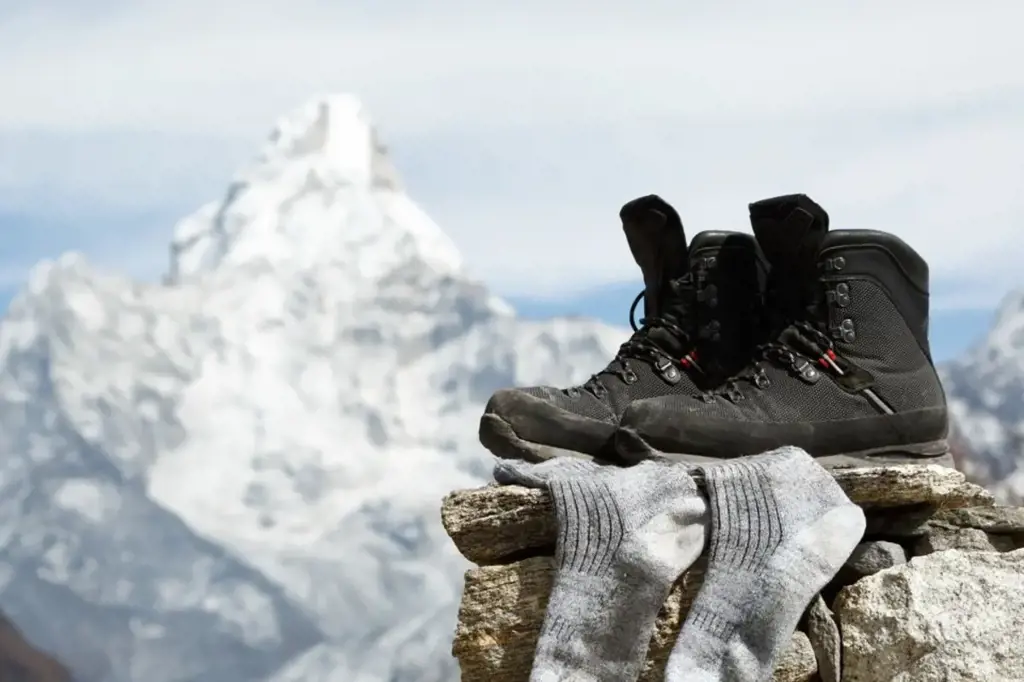
The Annapurna Circuit trek is a popular hiking route in Nepal that takes you through diverse landscapes, ranging from lush forests to barren mountainous terrain. When embarking on this challenging trek, it is crucial to have appropriate footwear to ensure your comfort, safety, and overall enjoyment throughout the journey. In this article, we will explore the type of footwear that is recommended for the Annapurna Circuit trek, based on scientific research, experienced trekkers' advice, step-by-step considerations, and real-life examples.
Scientific Research:
Scientific research suggests that the right footwear plays a vital role in preventing injuries and promoting comfort during hiking activities. A study published in the Journal of Foot and Ankle Research found that shoes with good arch support, shock-absorbing soles, and a sturdy outsole provide better stability and reduce foot pain during long-distance hiking. Therefore, it is essential to choose trekking shoes that meet these criteria.
Experienced Trekkers' Advice:
Experienced trekkers who have successfully completed the Annapurna Circuit recommend wearing hiking boots rather than regular sports shoes or sneakers. Hiking boots provide ankle support, which is crucial for navigating the uneven and rocky terrain encountered on the trek. They also offer better protection from sharp rocks and provide traction on slippery surfaces. Local guides and tour operators often emphasize the importance of wearing proper hiking boots for the Annapurna Circuit trek to ensure the best possible experience.
Step-by-Step Considerations:
When selecting footwear for the Annapurna Circuit trek, consider the following step-by-step considerations:
- Ankle Support: Look for boots that provide excellent ankle support to prevent sprains and injuries on uneven terrain.
- Waterproofing: The Annapurna Circuit involves crossing rivers and encountering rain. Opt for waterproof or water-resistant boots to keep your feet dry and comfortable.
- Traction: Choose boots with a rugged outsole that offers good traction on various surfaces. This will help you maintain stability and prevent slipping.
- Size and Fit: Ensure your boots fit properly, with enough room for your toes to wiggle and ample space for thick hiking socks. Consider trying them on with the socks you intend to wear during the trek.
Real-Life Examples:
Many trekkers who have successfully completed the Annapurna Circuit recommend specific brands and models of boots that have performed well on the trail. Some popular choices include the Salomon Quest 4D GTX, Keen Targhee II, and Merrell Moab 2 Mid Waterproof. These boots have excellent ankle support, waterproofing features, and durable soles that provide optimal performance on challenging terrain.
In conclusion, choosing the right footwear is crucial for a successful and enjoyable Annapurna Circuit trek. Scientific research, advice from experienced trekkers, step-by-step considerations, and real-life examples all point towards wearing hiking boots with ankle support, waterproofing, and good traction. Investing in the right pair of boots will help ensure your comfort, protect you from injuries, and enhance your overall experience on this breathtaking trek. Remember to break in your boots before the trek to prevent blisters and discomfort. Happy trekking!
Essential Packing Guide for a Memorable Visit to the Smoky Mountains
You may want to see also

Are there any specific items that are crucial for the high altitude conditions?
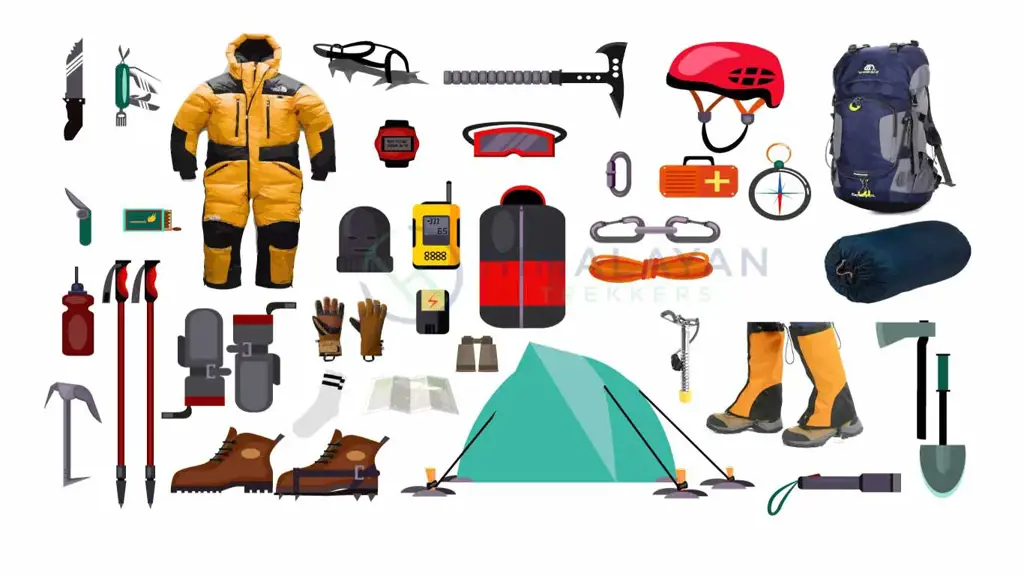
When it comes to tackling high altitude conditions, there are indeed specific items that are crucial for ensuring a successful and safe experience. Whether you are climbing a mountain, going on a high-altitude trek, or simply exploring areas above 8,000 feet, preparing and having the right gear is vital. In this article, we will discuss some of the essential items you should consider for high altitude conditions.
- Proper Clothing: Dressing appropriately for high altitude conditions is imperative. You will encounter extreme weather fluctuations, including low temperatures, strong winds, and intense sun exposure. Layering your clothing is key to regulating your body temperature effectively. Start with a moisture-wicking base layer, add an insulating mid-layer, and top it off with a waterproof and windproof outer layer. Don't forget to bring a warm hat, gloves, and a neck gaiter or scarf to protect your face from harsh winds.
- High-Quality Mountaineering Boots: Invest in a pair of sturdy and insulated mountaineering boots that provide excellent traction and ankle support. These boots should be designed for high-altitude conditions, ensuring they are waterproof and can withstand extreme temperatures. Don't forget to break them in before your expedition to avoid blisters and discomfort.
- UV Protection: Protecting yourself from the strong sun at high altitudes is crucial. UV radiation intensity increases as you gain altitude due to the thinner atmosphere, making your skin more susceptible to damage. Always wear a broad-brimmed hat to shield your face and neck from direct sunlight. Additionally, choose sunglasses with high UV protection to safeguard your eyes and prevent snow blindness.
- Climbing Equipment: Depending on your activity, you may need specialized climbing equipment. This can include crampons, ice axes, ropes, carabiners, and harnesses. These tools are essential for safely navigating icy or steep terrain, providing stability and security during your high-altitude adventure. Make sure you have the proper training and knowledge to use this equipment safely.
- Hydration Gear: Staying hydrated is of utmost importance at high altitudes, as dehydration can be more challenging to detect and more severe in these conditions. Invest in a high-quality insulated water bottle or hydration bladder that can resist freezing temperatures. It is also crucial to bring water purification tablets or a water filter to ensure a clean water supply during your journey.
- Altitude Sickness Medication: Altitude sickness is a common condition at high altitudes and can range from mild symptoms like headaches and dizziness to severe cases that require immediate medical attention. Consult your doctor before your trip and consider carrying medication like acetazolamide (Diamox) to help prevent or treat altitude sickness. Remember to acclimatize slowly and listen to your body's signals.
- Navigation Tools: Navigating in high altitude conditions can be challenging, especially in low visibility or when facing steep and uneven terrain. Carry a reliable map, compass, and/or GPS device to ensure you can find your way safely. It is also wise to bring spare batteries or a portable charging device to keep your electronic navigation tools powered.
In conclusion, when facing high altitude conditions, it is essential to be prepared with the right gear. Proper clothing, high-quality mountaineering boots, UV protection, climbing equipment, hydration gear, altitude sickness medication, and navigation tools are all crucial items to consider. Remember to research and select trusted brands, and always prioritize safety during your high-altitude experience.
The Ultimate Checklist for Packing for a Trip
You may want to see also

Are there any specific medication or first aid supplies that should be included in the packing list?
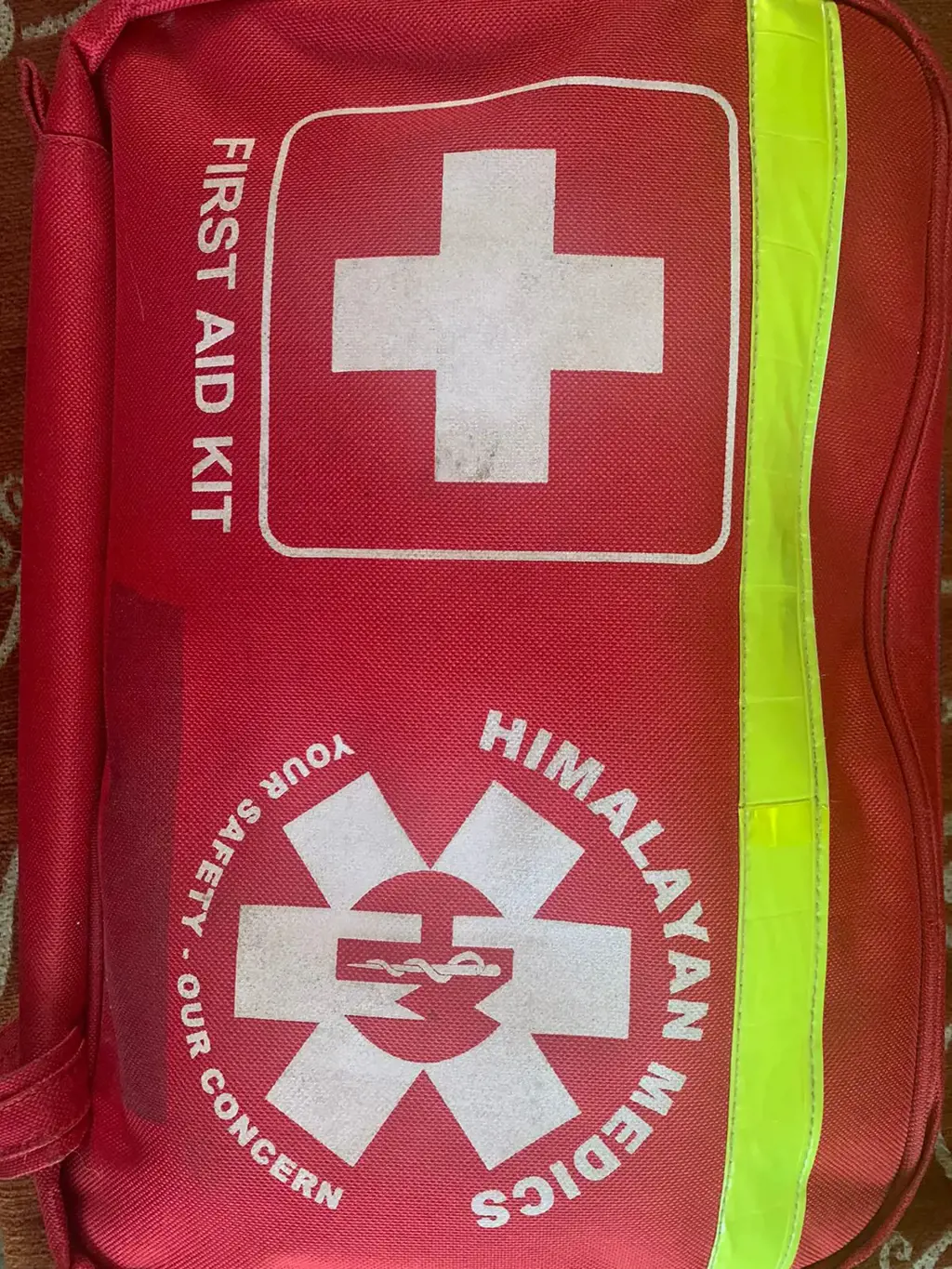
When it comes to packing for a trip, it is always important to be prepared for any situation. This includes having the necessary medication and first aid supplies on hand. Whether you are hiking in the wilderness or traveling to a foreign country, it is essential to have a well-stocked medical kit.
There are a few specific items that should be included in your packing list for medication and first aid supplies. These items will help you handle minor injuries and illnesses and provide some relief until you can seek professional medical attention if needed. Here are some essential items to consider:
- Pain Relievers: Over-the-counter pain relievers such as acetaminophen or ibuprofen can come in handy to relieve headaches, muscle pain, or fevers.
- Antihistamines: Allergies are common, and having antihistamines like Benadryl can help with allergic reactions, bug bites, or mild rashes.
- Antacids: Stomach upsets can happen, especially when eating unfamiliar food. Having antacids like Tums or Pepto-Bismol can provide relief from indigestion or heartburn.
- Sunscreen: Protection from the sun's harmful rays is crucial. Packing a high SPF sunscreen can help prevent sunburns and reduce the risk of skin damage.
- Band-Aids and Adhesive Dressings: Minor cuts and scrapes can happen anywhere. Having assorted adhesive bandages and adhesive dressings can help protect and cover wounds until proper medical attention is received.
- Antiseptic Wipes or Solution: Cleaning wounds with antiseptic wipes or solution helps prevent infection. These items are especially important when traveling in areas with limited access to medical facilities.
- Medications for Pre-existing Conditions: If you have any pre-existing medical conditions, be sure to pack enough medication for the duration of your trip. It is also advisable to carry a prescription or doctor's note to avoid any issues at customs.
- Tweezers and Scissors: These tools can come in handy for removing splinters, cutting tape or bandages, or trimming nails.
- Thermometer: A compact thermometer can help you monitor your body temperature in case of fever or illness.
- Prescription Medications: If you take prescription medications, it is essential to bring enough for the duration of your trip and carry them in their original packaging. It is also a good idea to have a copy of the prescription with you in case you need to refill them during your trip.
It is important to note that this is a general list, and the specific items you pack may vary depending on the destination, duration, and nature of your trip. For instance, if you are going on a camping or hiking trip, you may want to include additional items such as blister care products, ace bandages, or insect repellent.
To ensure you have everything you need, it is best to consult with a healthcare professional or pharmacist. They can offer guidance based on your specific needs and provide recommendations for any special circumstances related to your trip.
In conclusion, packing medication and first aid supplies is essential for any trip. Whether you are taking a short vacation or embarking on an adventure in the great outdoors, having a well-stocked medical kit can provide peace of mind and help you handle minor injuries and illnesses. By including the items mentioned above and tailoring them to your specific needs, you can be better prepared for any situation that may arise during your travels.
Ensuring You Have All the Essential Items When Packing for a Safari
You may want to see also
Frequently asked questions
When packing for the Annapurna Circuit trek, it is important to bring the right gear and clothing to ensure a comfortable and safe journey. Some essential items to pack include sturdy hiking boots, waterproof and breathable clothing, a warm hat and gloves, a good-quality sleeping bag, a first aid kit, a headlamp, and a water bottle.
While not absolutely necessary, bringing a trekking pole or walking stick can be beneficial on the Annapurna Circuit trek. These tools can provide extra stability and support on uneven terrain and steep descents, which can help reduce strain on your joints. It is recommended to bring at least one trekking pole for added safety and comfort.
Yes, it is a good idea to pack snacks and energy bars for the Annapurna Circuit trek. While there are tea houses along the trail where you can buy food, having some lightweight and easily accessible snacks can be helpful, especially during long hiking days or when energy levels are low. Granola bars, dried fruit, nuts, and chocolate are all great options to consider.
It is recommended to bring your own toiletries for the Annapurna Circuit trek. While some tea houses may provide basic toiletries, such as soap, shampoo, and toilet paper, it is always best to have your own supply. Consider packing a small travel-sized kit with items like toothpaste, toothbrush, hand sanitizer, wet wipes, and a small towel.
A down jacket is highly recommended for the Annapurna Circuit trek, especially during the colder months of the year. The higher altitudes can be quite chilly, and having a down jacket will help keep you warm and insulated. Look for a lightweight and compact down jacket that can easily fit into your backpack when not in use.






